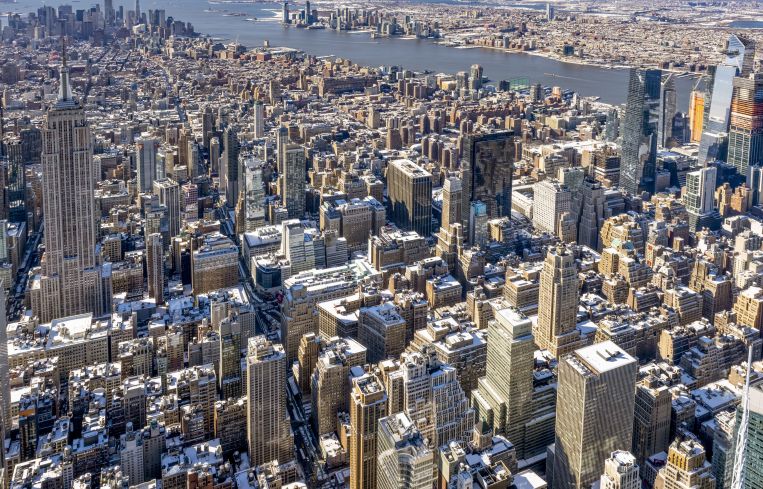Top New York City Office Space Continues to Draw Bargain Hunters
Even as vaccines promise a return to some normalcy, the city's office sector continues to struggle with a lack of demand
By Tom Acitelli February 24, 2021 11:36 am
reprints
Demand for office space in New York City’s top business districts remains sharply down from the same time last year, just before the pandemic swept in and disrupted everything.
That’s according to new statistics from VTS, an online platform that tracks office leasing of non-Class C space in major business districts nationwide. In particular, VTS tracks new demand — companies looking for space before they lease.
That new demand in New York is down 66.4 percent annually for February, according to VTS’ office demand index (VODI). There was a slight improvement in the demand metric coming into the new year, but it seems to have vanished. Right now, of the major markets that VTS tracks, New York is the furthest from its pre-pandemic levels.
“Finance has been a bright spot with respect to demand, contributing to most of the VODI recovery in NYC,” the VTS report said. “Tech, however, which emerged to be one of the primary drivers of office demand last cycle alongside finance, has yet to return and contributes minimally to the current New York City VODI.”
What’s more, this dearth in demand has opened up the city’s top-shelf, Class A space to bargain hunters. The VTS data found that 82 percent of all office tours by prospective tenants in January were of such higher-end space, suggesting companies are bypassing the generally cheaper addresses they would’ve normally scoured.
And why not? These latest numbers are in line with what other sources are saying about the New York office market’s prospects coming out of COVID. In short, they all say a recovery is going to take a while. A Moody’s Analytics analysis expects the Manhattan office vacancy rate, for instance, to rise through this year and next, to 12 percent. Rents, too, because of this drop in demand, are not expected for several years to erase pandemic-induced losses.
Overall, though, New York’s experience in the early months of 2021 mirror other major markets, such as Los Angeles, Washington and Chicago. New demand for office space ticked upward at the start of the year compared to the height of the pandemic in 2020, but remained well below where it was at the start of that year. VTS’ national measure was down 60 percent annually in January and 57 percent in February.
One bright spot, though: VTS says that demand for office space no longer directly hinges on local COVID-19 case counts.
“Instead,” the company’s analysis noted, “today’s employers are looking at both the near- and long-term variables including office-using job growth, expected vaccine distribution, anticipated return of urban amenities, and the potential for long-lasting public as well as the in-office safety measures.”
If you found this article interesting, please consider signing up for Commercial Observer’s Washington, D.C., Los Angeles and South Florida email newsletters, as well as CO’s Tenant Talk newsletter about major issues, trends, and events affecting office and retail tenants.



